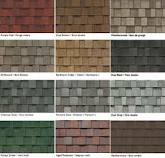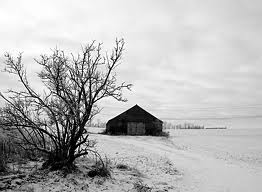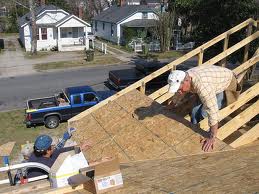Archive for September, 2011
Still Popular Asphalt Shingles

Residential homes still prefer asphalt shingles according to senior director Tom Bollnow at the National Roofing Contractors Association (NCRA). Asphalt shingles account for 70% of roof installation projects. The two types of asphalt shingles are organic and fiberglass.
Low Cost Big Factor in Choosing Shingles
Their popularity is due to their low price, starting at about .80 cents per square foot installed. They come in a variety of colors and styles; they are lightweight, attractive, durable and easy to repair. Advancements have been made to the asphalt shingles making them more fire retardant, wind and weather resistant and longer lasting. Warranties generally range from 20 to 50 years.
Replacing Shingles
When you spot a possible leak inside your home, you can usually trace the leak to a cracked or missing shingle. Asphalt shingles are easier to repair and replace than most other roofing materials. Missing or torn shingles can easily be replaced and raised or curled shingles can be flattened with roofing cement.
If you are going to do it yourself, remember shingles are more pliable when warm, a cold shingle can be brittle. To remove a damaged shingle, carefully lift the surrounding shingles and remove the nails and then slide out the old shingle. Put the replacement shingle back in place and secure with galvanized roofing nails. Use roofing cement and make sure the edges and corners are firmly set in place.
When To Call A Roofer
If you have more than a couple of shingles to replace or if they come up too easily, you may want to call a professional in to inspect your roof and see if it’s time to replace the entire roof system.
Finding The Right Roofer
 Repairing or replacing a roof can be a major expense and getting the right roofer to complete the job can be challenge in itself. No two roof contractors are the same and neither are their bids for the job. Make sure the roofer you choose meets the following criteria before agreeing to hire them for your roof repair or replacement.
Repairing or replacing a roof can be a major expense and getting the right roofer to complete the job can be challenge in itself. No two roof contractors are the same and neither are their bids for the job. Make sure the roofer you choose meets the following criteria before agreeing to hire them for your roof repair or replacement.
Local
It might seem obvious to hire a roofer that is locally owned and operated but you would be surprised to find out that homeowners rarely ask a company where they are based. Many roof companies operate in many zip codes and counties.
In general, there is nothing wrong with hiring a roofer that is based out of a neighboring zip code as long as they are familiar with your area and have completed jobs in your area in the past. Roofing companies that are new to the area have relocated to your area or cannot provide any references of completed work nearby should be a red flag. This may be a sign of a company with poor businesses practices or scam.
Licensed and Insured
Although it may be tempting to hire the roofer with the cheapest bid, but if they aren’t licensed and insured you are opening yourself up to potential problems down the road. Most states require a company to be licensed and registered with the state if they are going to be completing any construction work to a home over a specified dollar amount.
These laws help protect homeowners from unscrupulous contractors that operate without the proper credentials or insurance. If a roof contractor is not insured, you are left to foot the bill if any damage occurs to your home during the roof repair or replacement.
Fire Safety and Roofs
Most roofing materials are fire-rated by standards writing organizations. You may have noticed a UL on the roofing material for Underwriters Laboratory, National Fire Protection Association (NFPA) or the American Society for Testing Materials (ASTM).
Class
Class “A”, being the most fire resistant, is able to withstand severe exposure to fire originating outside the building. Class “B”, is able to withstand moderate exposure to fire originating outside the building. Class “C”, is able to withstand light exposure to fire originating outside the building. And unrated, which is the most vulnerable roof.
To determine the fire ratings, roofing material is set on fire in a laboratory. A burning piece of wood is set on top of the testing material and then set on top of a roof structure mock up.
Fire Rating
- Class A roof coverings include composition shingles, clay tiles, slate, concrete, steel or copper roofs. Ceramic and concrete roofs are heavy and weaken building structures creating a higher risk for collapse.
- Aluminum roofs can have a Class A if installed with a fire resistant underlying material.
- A fire retardant treated shake roof has a Class B rating, but can qualify as Class A if a fire resistant material is used underneath the shakes. If you cannot find the fire rated documentation from the manufacturer, assume your wood shake is unrated.
- Recycled rubber and plastic roofing shingles and shakes usually have a fire rating of Class C. Manufacturers can increase the fire rating if a fire resistant underlayment is used.
- Green roofs, there are no current fire ratings for these plant covered roofs. Naturally fire retardant sedums and succulents do not pose a risk to spreading the fire. If you use natural grasses on your roof, you can assume they are the same risk as grasses in your yard. If the plants are dry, they will burn and potentially spread the flames.
- Thatch roofs have been used for literally thousands of years. Fire danger is reduced by using aluminum barrier foil, fire retardant spray and non-combustible underlayment.
Check the Packaging
Check the fire rating class on the packaging of the roofing materials you are purchasing. Ask if there are ways to increase the fire rating, such as special underlayments or fire retardant sprays. Also check with your homeowners insurance and make sure the roofing material you are considering will be covered under your current policy.
New Roof Tile To Give Urban Areas A Break From Smog
 Residents of urban areas are about to get a break from the toxic gases in the local air. Roof materials have recently made the leap into a new type of green roofing, providing environmentally conscious tiles that can actual absorb smog.
Residents of urban areas are about to get a break from the toxic gases in the local air. Roof materials have recently made the leap into a new type of green roofing, providing environmentally conscious tiles that can actual absorb smog.
What’s New
Recent advances in roof materials have brought welcome relief for homeowners and residents of urban areas. Urban living is plagued by air pollution and residents have very little option for avoiding it. Improvements in the green roofing industry have brought rooftop gardens into urban areas to help combat some of the effects of air pollution, as well as add a much needed green space to an otherwise concrete filled city.
Clay tiles and a cement roof product are now available in a smog reducing variety. Made from titanium dioxide, these new roof materials combat pollutants by reacting with nitrogen oxide in the air. The result is the breakdown of toxic gases into harmless nitrate gases. The tiles are activated by the sun’s rays, which starts the chemical reaction that breaks down the nitrogen oxides in the air into oxygen and nitrates.
Cleaner air means happier homeowners and renters. Big cities have face numerous challenges, but luckily are getting a little help from roofers that are committed to finding top quality products.
Winterize Your Roof

Is your roof ready for winter? Before you know it your rooftop will be assaulted by water, ice and snow. If you have existing damage, such as shingles that are lifting up or cracked, flashings that are missing or damaged or just an older roof that may have used up its life expectancy, you might want to check out the new roofing products that can protect your home.
Asphalt Shingles
The standby asphalt shingle is still the least expensive and reliable option. For a more ice and snow resistant shingle, the architectural shingle is a good choice. It can cost up to 20% more but it is thicker, more durable, and wind and storm resilient.
Metal Roofs
Metal roofs, although more expensive than asphalt roofs, generally last longer and have a longer warranty. A reflective metal coating can cut your energy costs in the summer by deflecting the sun’s rays and keeping your roof and attic cooler.
Cedar Shakes and Shingles
Cedar shakes and shingles withstand high winds and hail but the wood shakes can expand and contract causing splitting and cracks in your roof. There are synthetic cedar roofing products available that cost about the same as real cedar shingles and won’t split or decay.
Rubber Shingles
Recycled rubber roofing materials, rubber shingles are impenetrable to water and resistant to hail. They cost more than asphalt shingles but will last longer and can be returned to the recyclers after the roof has outlived its usefulness.
Concrete, Slate, Clay
Other options are concrete and slate they are very durable but very expensive and heavy. Clay can freeze and crack so it is not a good option if you live in a cold climate.
Trying to hold off on making roof repairs until a better time comes up, may cost you more in the long run by having to replace the decking, insulation and interior walls due to leaks and water damage.
Rubber Shingles
Recycled tires are making their way to the rooftops. Shingles made from old tires look like slate or cedar shakes but are generally much lighter, carry a class A fire rating, can withstand 80 mph winds and make excellent insulators against outside weather conditions and noise.
Annually, millions of tires and asphalt shingles are thrown into our landfills. Rubber shingles are made from recycled materials that are heated and molded into strong, firm and flexible shapes. After the life of the roof, 30-50 years later, the shingles can go to the recycle center again.
Green Roofing
The environmentally friendly rubber shingles are durable and impervious to water and plants. The rubber shingles are also hail and fire resistant. Rubber shingles are less expensive than cedar or metal roofs, but more expensive than asphalt shingles, although they require much less maintenance because of their sturdiness.
Sturdy
The rubber panels interlock holding down the shingles at the corners. The shingles can also be walked on during installation and will not cause any damage. You may notice a rubber smell on your new roof, exposure to elements and time will cause the odor to go away.
The warranties on rubber shingles run from 30 years to lifetime warranties. Ask your roofer or contractor if rubber shingles is a good option for you and your home.
Cedar Shingles Not Getting A Fair Shake
 When it comes to choosing the right roof material for your home, sorting through all the choices can be exhausting. With so many different types of materials, each available in a variety of colors and styles, many homeowners tend to shy away from non-traditional materials.
When it comes to choosing the right roof material for your home, sorting through all the choices can be exhausting. With so many different types of materials, each available in a variety of colors and styles, many homeowners tend to shy away from non-traditional materials.
Wood shingles, also known as shakes, have a checkered past. Depending on who you ask, these unique roof shingles come with their fair share of risks, but they also bring many benefits as well. Due to the costly nature of roof repair and replacement, many homeowners simply don’t want to risk installing a roof material they haven’t used before.
Advantages
Wood shingles offer a variety of colors, style of cut and dimensions. They can be easily tailored to fit many angles and roof lines, as well as cut in various styles. Many homeowners may use them to cover the entire roof, or provide a designer style accent to a portion of the roof. Some homes even use wood shingles to accent portions of the exterior wall to the home.
Wood shingles are typically made from cedar, a naturally water resistant and aesthetically appealing wood. They are lightweight and allow air to flow beneath the shingle to the underlying materials, which can provide necessary heating and cooling effects to the attic of a home. These days, wood shingles are available in a recycled version, which is made from recycled wood and scrap lumber. Recycled roof materials have become popular among the green roofing movement.
Disadvantages
Wood shingles do require a bit more maintenance than other roof materials. Since they are made from wood, they tend to be more vulnerable to water damaged, mold and insects. However, regulations require that wood shingles get chemically treated to reduce the risk of fire or water damage. The increase maintenance requirements can also lead to an increase in the costs associated with maintaining the roof materials.
Wood shingles can be a great roof material choice for many homeowners. Choosing an unfamiliar roof material is not a bad idea as long as special considerations for the weather conditions and maintenance requirements are upheld.
Falling Roof Tiles
Roof tiles are falling from the town hall on Central Street in Brookfield, Mass. In 2006 selectmen became aware that Pinnacle Roofing improperly installed the roof resulting in tiles to fall from the roof. The Town Hall roof project was managed by Reinhardt Associates Inc., and the now defunct Pinnacle Roofing of Shrewsbury.
Pedestrian Hazard
The tiles started falling from the town hall last year after becoming loose after the roof iced up. Snow, ice and 100 fallen slate tiles have fallen from the roof creating a hazard for pedestrians and parked cars.
Considered Options
Two considered options include putting up a snow fence and gutters over the three entrances at the town hall and to install a snow guard over the roof perimeter, the other options is to extend the snow fence to include the entire perimeter of the roof. Board officials and engineers will draft an article for a special town meeting in November to decide on the best option.
The town’s insurance company will not cover the cost to replace or repair the roof stating they are not liable due to “faulty workmanship”. The Town Hall Improvement Account, and money left over from the original roofing job will cover most of the costs of the safety options.
Hotel Roof Gets A Sweet Deal
 One hotel in Washington, D.C. has sparked, what they hope will be, a new way to boost local economies. Two chefs that operate the hotel’s restaurant have decided to take the local food movement into new territory, the roof.
One hotel in Washington, D.C. has sparked, what they hope will be, a new way to boost local economies. Two chefs that operate the hotel’s restaurant have decided to take the local food movement into new territory, the roof.
The hotel roof is now home to three beehives that are busy producing honey, which is being harvested for use in the hotel’s restaurant and being sold at the local farmers market.
Operating a honey-producing beehive on the rooftop of a 10 story hotel is a radical idea, but one that is proving to be of great use.
One Idea, Many Benefits
The local food industry is getting a sweet taste of success and so are the hotel guests. Not only is the fresh honey spreading throughout the menus of Washington, D.C., but the bees are experiencing new heights. In such an urban area, having an undisturbed space for maintaining a hive is a rare treat for these insects. The sparse urban plant life also benefits from the bee’s activity as they help spread pollen, a necessary component to a flower’s health.
Not only are the local people and bees happier, but so is the hotel’s owners. Beehives are one of the lowest maintenance food producers and are proving to be both profitable and environmentally friendly. Even better is the protection the roof is getting from traditional pests, which are not likely to take up residence near a beehive. As far as the need for roof repair due to damage to the roof materials, the hotel’s owner has yet to see any evidence of the bee’s presence producing negative effects.
Rooftop beekeeping isn’t a new idea, but how the mutually beneficial relationship is being nurtured is one that is sure to spread sweetness around local markets.
Roof Sheathing
Roof sheathing (or decking) is the layer in between the rafters and the shingles on your roof.
It is important for your roofs sheathing to be attached securely and in good repair to keep your home dry and structurally secure. Sheathing is not one size fits all, there are different options and considerations when adding new or replacing your roofs sheathing.
Energy Efficient
To get the most energy efficiency possible, use the appropriate sheathing materials. Radiant barriers can be stapled to plywood or OSB before the plywood is installed. OSB is generally more environmentally friendly since it is made from small trees grown in sustainable forests and tree farms.
The typical sheathing materials are plywood, particle board or wafer-board sheathing. If you are not using composite shingles, you can use 1×4 slats instead. Using slats or spaced sheathing is important to keep the wood shakes and shingles from rotting.
1 x 4 Sheathing
Spaced sheathing is generally made with 1×4’s this is commonly put under wood shingles, wood shakes, tile and metal panel roofs. For insulation or strength, the slats may be installed over a plywood roof deck. In most cases the 1×4’s are nailed directly to the rafters, spaced according to the required exposure of the roofing material.
Particle Board or Plywood
Plywood, particle board or wafer-board roof sheathing is most commonly used. Plywood sheathing is used for composition shingles, roll roofing and slate.
Plywood is also used as for a base for spaced sheathing when the roof requires diagonal strength or a solid wind barrier for materials such as tile. Check with your local code as to which thickness you use, the range will be from 3/8″ to ¾” thick.
Tongue and Groove
Tongue and groove sheathing is used if the sheathing is visible from inside the house, as in cathedral ceilings. Standard 2 x 6 tongue and groove roof decking is used.
Install the first board along the eaves with the tongue edge facing toward the ridge. Stagger butt joints so that they do not line up over the same rafter, and leave 1/16 inch for expansion. Some decking is manufactured with tongue and groove ends as well, so you can place butt joints anywhere.
You can talk with your contractor or roofer to decide the best option for you and your home.










